Asplenium and its cultivation
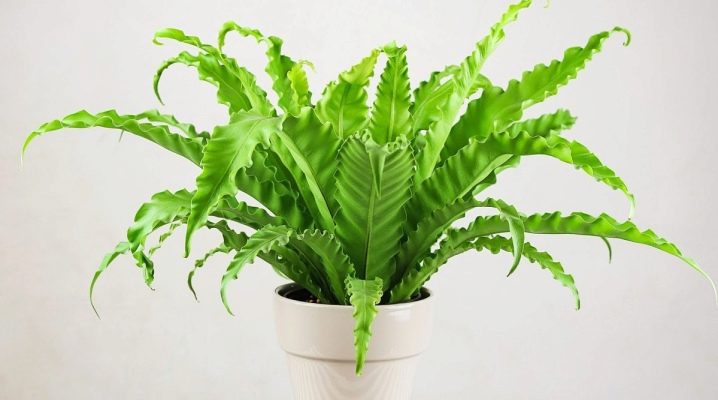
Unpretentious and beautiful species of fern are aspleniums - plants that grow in the wild around the globe. The culture can often be found in gardens, apartments, or office spaces. It is distinguished by its high growth rate and the absence of complex care.
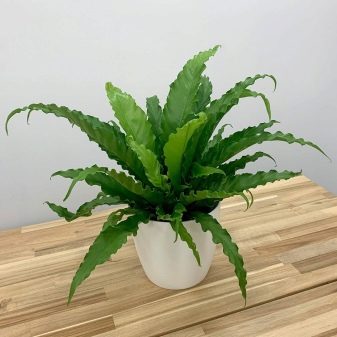
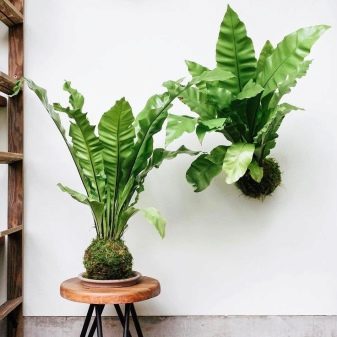
general description
Asplenium is a popular ornamental plant that belongs to the bone family. It is a perennial herb with simple, smooth and intact leaves. The reproductive organs are located on the lower part of the foliage. The flower petioles are distinguished by good density.
Due to its unique characteristics, the plant has gained high popularity among gardeners. Can be grown both at home and in the garden. Among the large number of varieties, there are winter-hardy varieties.
For indoor cultivation, tropical species are mainly used.
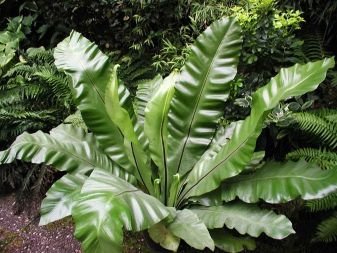
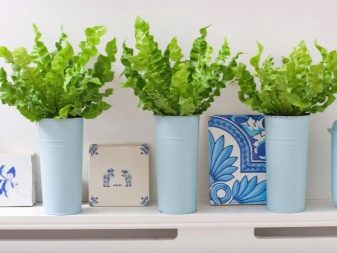
Types and varieties
Asplenium has more than 500 different varieties and varieties of fern plants. For home cultivation in an apartment, tropical evergreen types are often used.
Here are the most popular varieties and their descriptions.
- South Asian. Plant of epiphytic type, characterized by large leaves, the length of which reaches 1.5 m. The rhizome of the bush is thick and straight, with a scaly structure and a large number of adventitious roots. Spore-bearing organs are located obliquely and differ in a linear shape.
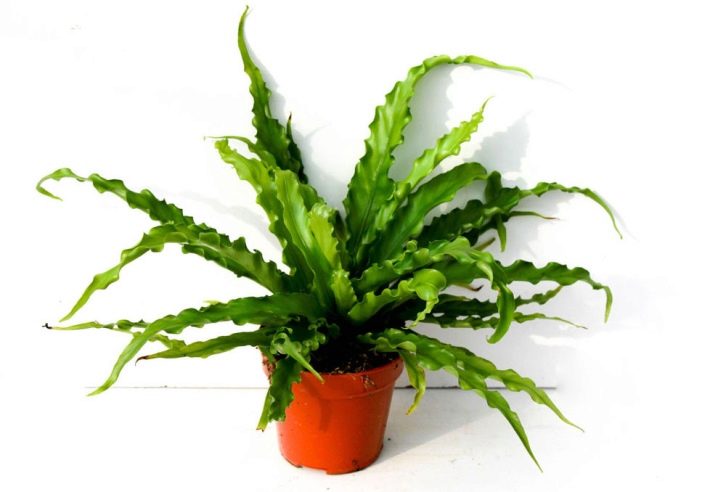
- Gnezdovoy. The most popular variety for indoor cultivation. The foliage is 1.5 m long. The root system is very dense.
Due to the brown vein in the center of the leaf, the plant is characterized by good decorative effect.
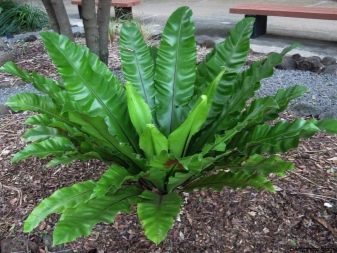
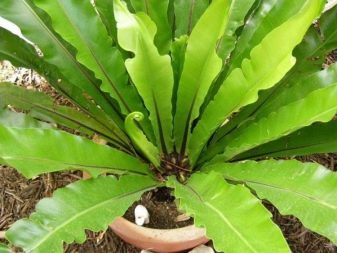
- Scolopendrium. Green leaves of a fluffy shape initially grow upwards, after which they bend in an arc. Due to the unique structure of the foliage, the plant is often used for garden decoration. Suitable for cold rooms. Can be grown in northern regions.
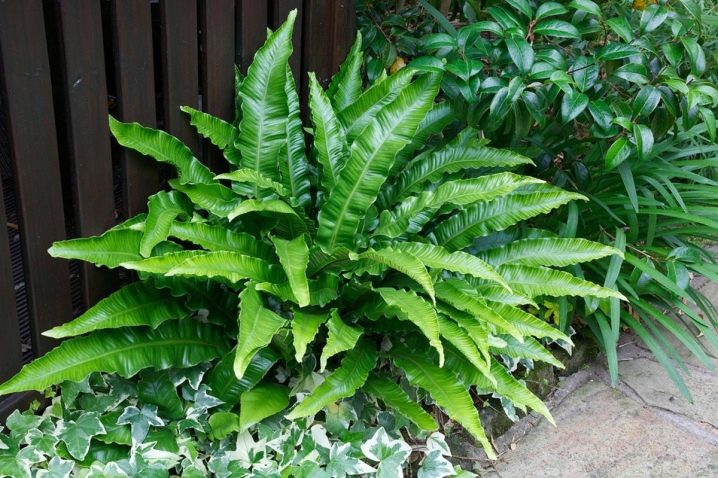
- Bulbiferous. Fern of deciduous herbaceous type. The foliage is characterized by a feathery structure and an oblong-triangular shape. The length of individual leaves varies from 30 to 60 cm with 25 cm in width. Brood buds are observed in the upper part.
The variety is widely cultivated for warm indoor cultivation.

- Viviparous. It is a perennial rosette plant. The foliage has short petioles with a feathery structure. The length of the leaves is 40-60 cm with rather narrow and linear segments. Sori are located at the edges of the rhizome.
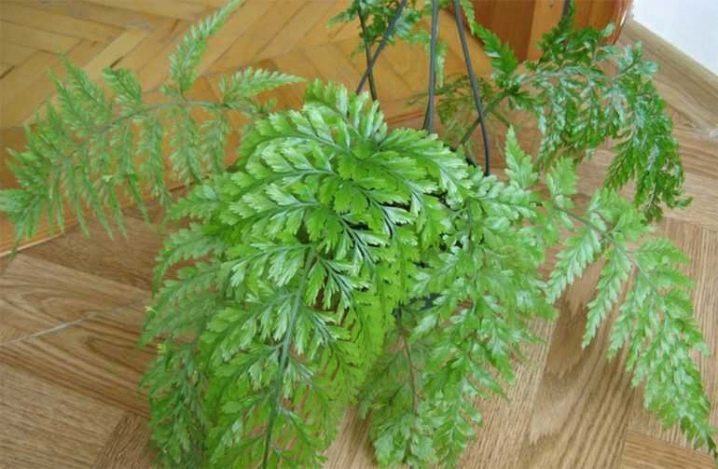
- "Nidus Campio". One of the most beautiful varieties. It is characterized by an elongated leaf shape and lush rosettes. The leaf blades are distinguished by sharp edges, leathery-glossy structure and a dense brown central vein. Usually grown as a single crop in small offices or apartments.
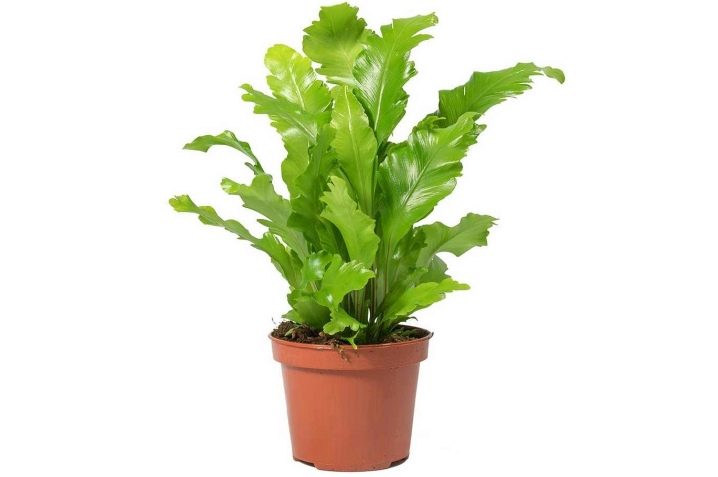
- Hairy. An evergreen fern with feathery foliage extending from the main rhizome. The petioles of the plant are usually brown or black. The foliage is round with small teeth. In the lower part, there are voluminous sori with additional spores.
Differs in a unique aroma.
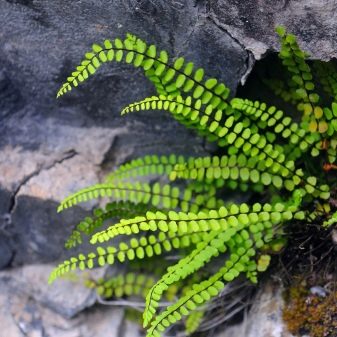
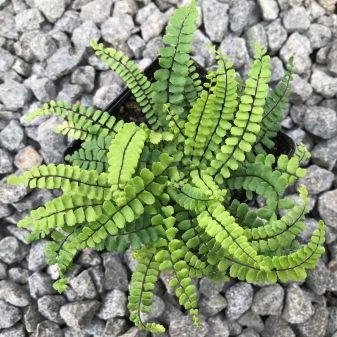
- Carrot-leaved. Perennial fern with short petiolate leaves 40 to 70 cm long. The main segments of the plant are rather narrow and linear. Sori appear at the edges of the rhizome.In the upper part of the foliage, excretory buds are formed that can take root.
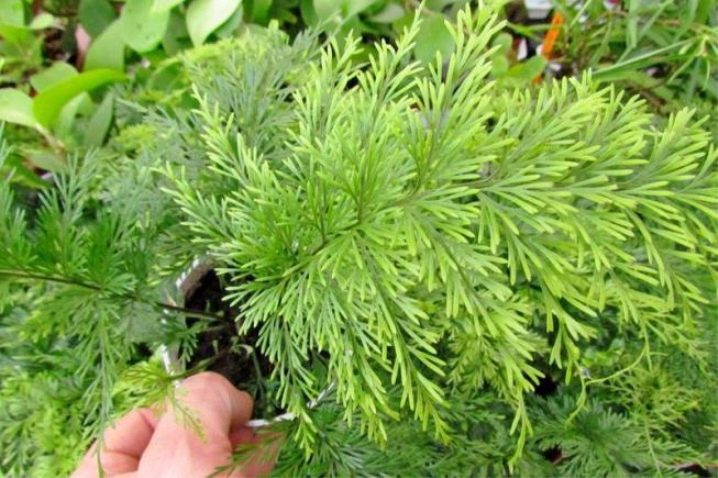
- "Leslie". A miniature decorative look, characterized by curvaceous forms. The foliage develops vertically with slight wavy edges. The main fronds are whole. The length of the leaves reaches 1 m. Quite a popular variety among flower growers.
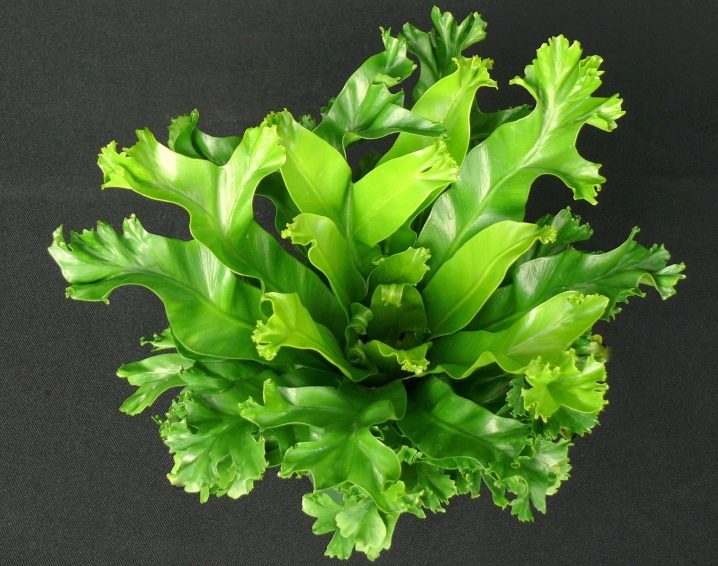
- "Crispie Wave". It is characterized by a lush rosette and a refined foliage shape. Usually the leaves are erect with a wavy structure, grow from one basal rosette. The length varies from 1 to 1.2 m. It is grown as a single plant.
Differs in capriciousness to external conditions.
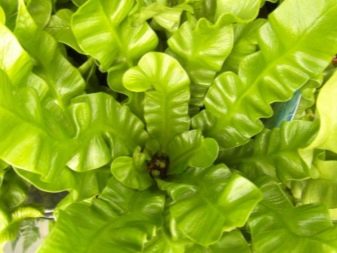
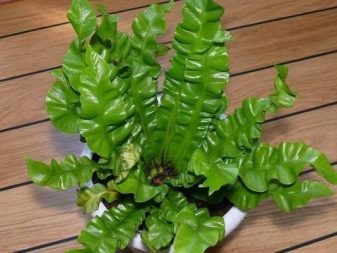
- Wall. A perennial fern with a height of 5 to 15 cm. The rhizome of the culture is distinguished by its short length and linear dark-colored scales. Oval-shaped leaf plates on small petioles. Epithelial membranes with ciliated edges are observed along the main sori.
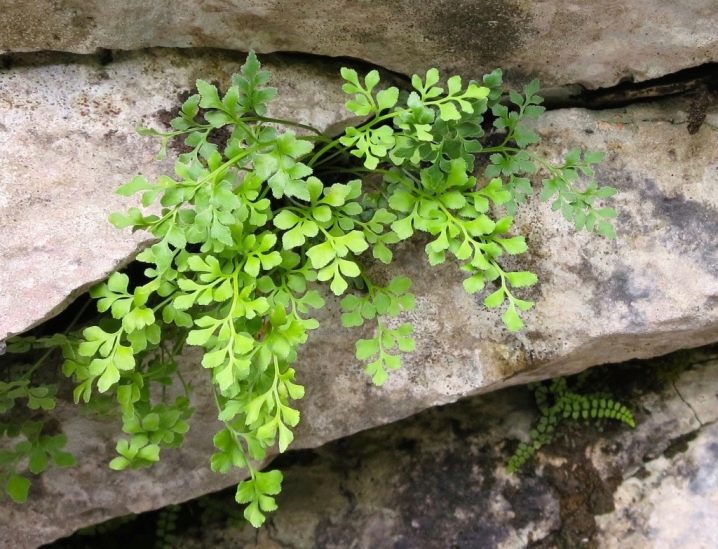
- Dragon's Tail. Evergreen small fern with rising foliage. It got its name from the unique shape of the leaves, which visually resemble a dragon's tail. The length of the scales on the trunk is 2-4 mm with a total height of up to 20 cm.
It is an ornamental type of plant.
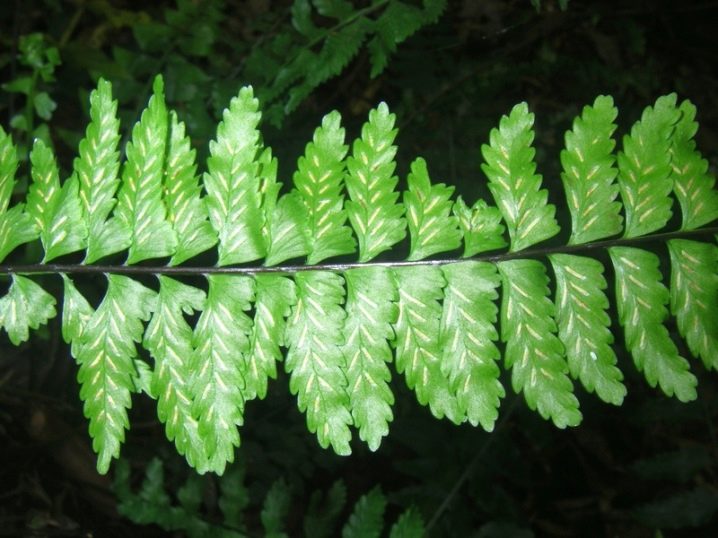
- "Nidus". In another way, it is called a green fountain. Quite a popular and common plant variety. It is characterized by forked or feathery foliage with a vertical rhizome.
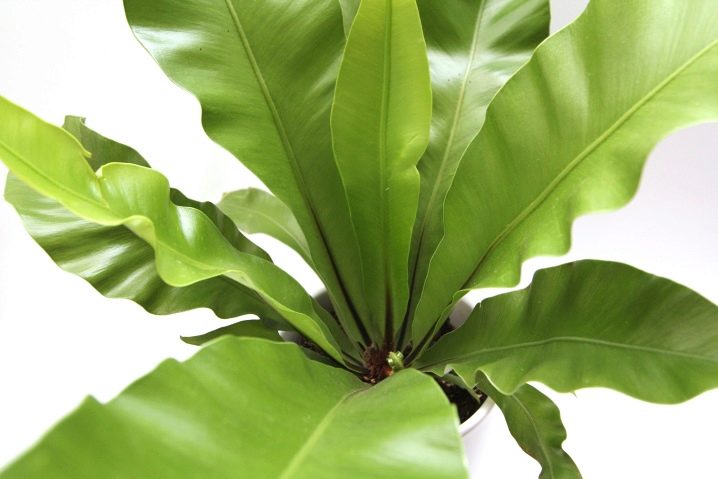
In addition to the varieties described above, the umbrella, Altai and Dagestan species are also common among gardeners, which are distinguished by their unpretentiousness to external conditions. Recently, varieties such as Parvati and Osaka, small "office" crops, are gaining special popularity.
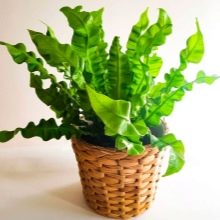
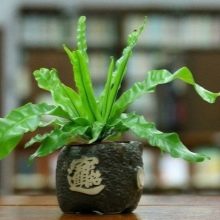
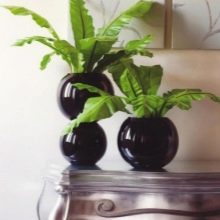
Landing
When planting, it is recommended to cover the plant with foil or thick glass. This recommendation allows you to better maintain natural moisture. Before planting the fern in small pots, add expanded clay or pebbles. The plant can be fixed with a wire frame or a low wooden stick.
When planting a plant, it is especially important not to tamp the soil around. Otherwise, the root system will begin to suffocate over time.
Experts recommend making several small holes in the pot itself for better ventilation.
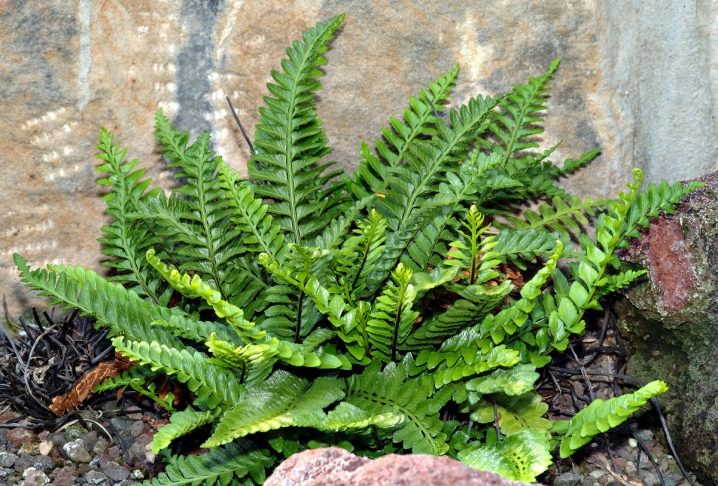
Care
In order for asplenium to please with its beauty, you need to know how to properly maintain the plant. Care rules relate to feeding, watering, pruning and transplanting. And also it is necessary to adhere to simple recommendations for the external growing conditions.
Conditions
When growing a plant at home, it is especially important to monitor the temperature regime. The best temperature for a fern is 22 ° C in normal humidity. In winter, the optimum temperature range is from 15 to 20 ° C. Lower rates can lead to death.
When growing, it is necessary to avoid direct sunlight, which can cause death or browning of foliage. Also, you should avoid cold air and drafts. Fern is best placed on the western or northern side, in winter, cleaned in the shade.
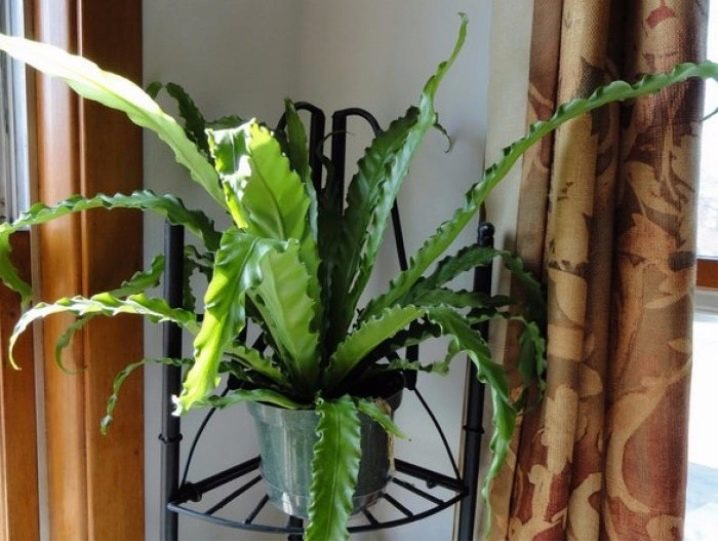
Watering
In order for a plant to be of high quality and healthy growth, it must be watered abundantly and regularly. To do this, you must use soft and settled water. In the hot season, the flower is watered more often. A dry earthy clod often leads to death. It is also important to monitor the absence of waterlogging.
Experts recommend spraying foliage exclusively in summer. It is better to water the fern using the drainage holes, after placing the pot in a small vessel of water. Thus, the soil can quickly be saturated with moisture.
If cold air is present in the room, spraying should be stopped to avoid mold growth.
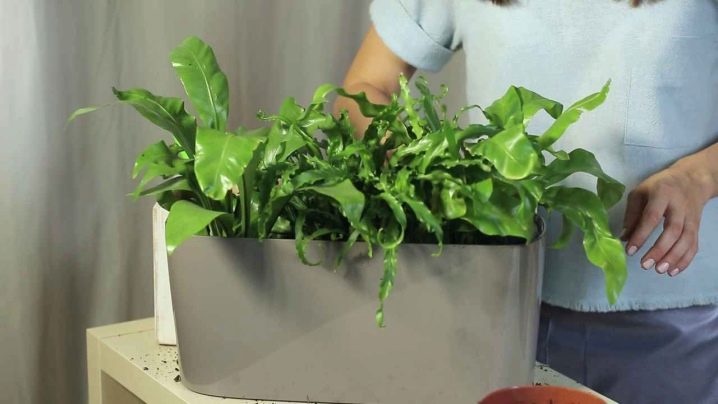
Top dressing
Asplenium is a plant that requires frequent feeding.Mineral complex compositions based on potassium are suitable as fertilizers. Any substances must be diluted by 50% of the amount indicated in the instructions.
Fertilizers are always applied at the same time as watering. It is recommended to combine mineral dressing with organic compounds. Held at any time of the year - once every 2 weeks.
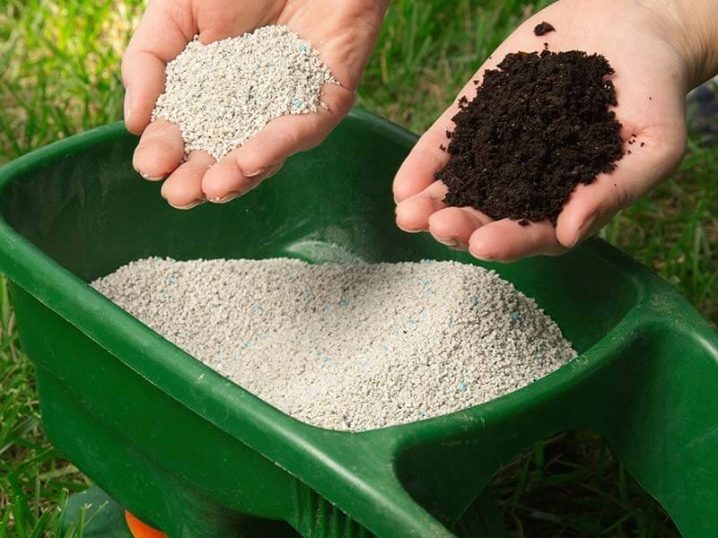
Transfer
The plant is distinguished by the rapid growth of the root system, which is why it needs a timely transplant. Otherwise, roots will start to grow into drainage holes or appear on the soil surface.
In the process of transplanting, it is especially important to remove dead parts of the root system. The land must be treated with care, as the fern loves loose soil. After the asplenium has been transplanted, it must be sprayed and watered with warm water. A deep and wide pot is suitable for the plant.
For young flowers, a soil mixture of humus, peat and sand is used, which are combined in equal quantities. If the fern is mature and large in size, it is necessary to use peat, humus and a small amount of sphagnum moss or charcoal.

Pruning
A distinctive feature of the fern is its highly sensitive frond, which does not like direct sunlight and too dry air. In the presence of these factors, the plant quickly begins to rot and dies. To avoid this, cropping is used.
It is recommended to prune foliage once every few years. Better to use a special pruner or a sharpened knife. Pruning is carried out at the base of the bush. Too much foliage also interferes with the formation and development of early shoots.
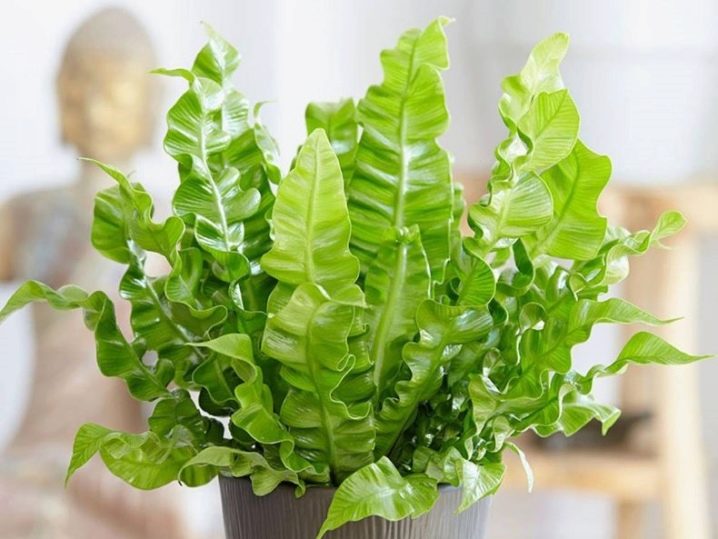
Reproduction methods
The most popular breeding method is dividing the bush. To do this, you need to remove an adult plant from the pot and divide it into several parts. It is important that each part has at least 8-10 tops of the shoots. The lot is planted in a new substrate by 20-25 mm. Too much deepening leads to damage to the root system.
In addition to dividing, the culture can be quickly propagated using spores. To do this, you need to cut off a sheet of asplenium and carefully scrape off the spores onto a blank sheet of paper. Further, disinfected soil and drainage are poured into the nursery.
Spores are dispersed evenly with preliminary soil moisture. Next, the nursery is covered with glass and installed in a warm place without direct sunlight. The shelter is removed daily for ventilation. After the sprout has appeared, the plant is transplanted into peat soil.
To propagate the bush with the help of the kidneys, it is necessary to take a small number of children from the mother's leaf and plant them in a peat mixture.
As you grow, you should follow the above care recommendations. If necessary, the kidneys can be cut off.
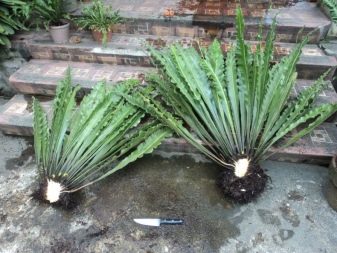
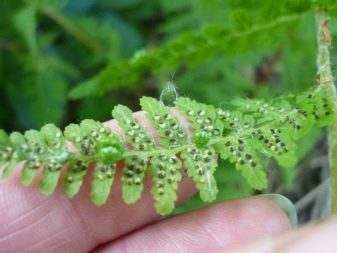
Diseases and pests
Most often, the plant is exposed to bacteriosis and gray rot. To avoid these diseases, it is necessary to carefully monitor the watering and spraying of the fern. Too moist soil leads to most common diseases.
Multiple spots of different shapes on the fronds are a sign that the fertilizer used is too high in concentration. To remedy this situation, any top dressing must be stirred in water to 50% of the volume specified in the instructions.
An incurable disease of the fern is the leaf nematode, which is characterized by brown spots on the foliage and main trunk. Unlike natural dark blotches, such a pathological process cannot be corrected - the plant gradually rots and dies.
Often, the plant is affected by microorganisms such as tafin and phyllostik. In this case, it is necessary to use specialized preparations with high fungicidal activity. After using a chemical agent, watering should be stopped for 2-4 days.
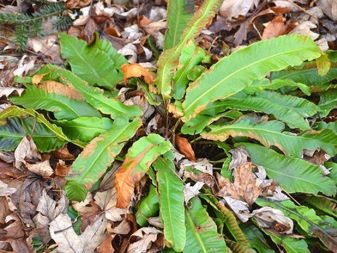
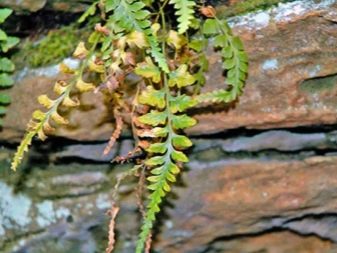
Yellowing of the tips of the foliage is observed with low humidity and the absence of timely watering. If the plant turns pale, and there are small burns on it, this indicates direct sunlight. Leaf curling appears due to waterlogging of the soil and drafts.
Certain fern species are often exposed to scale insects and spider mites. In this case, it is necessary to rinse the plant with warm water with the addition of a small amount of soap solution - 20 g per 1 liter. The treatment should be repeated until the pests have completely disappeared.
Varieties with a dense leaf structure are treated with a cotton swab soaked in kerosene or ethyl alcohol in advance. Processing is also carried out using tinctures of pepper, garlic, sorrel and tobacco. A more gentle effect can be achieved by using orange or tangerine peels, which are pre-infused in hot water.
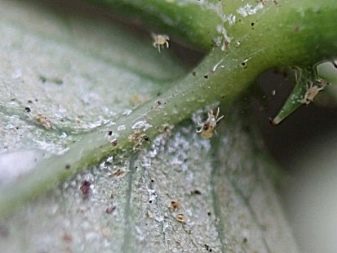
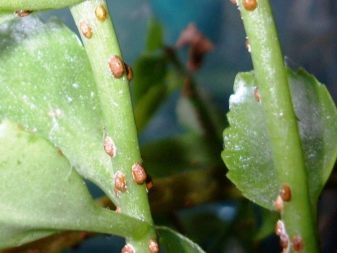













The comment was sent successfully.